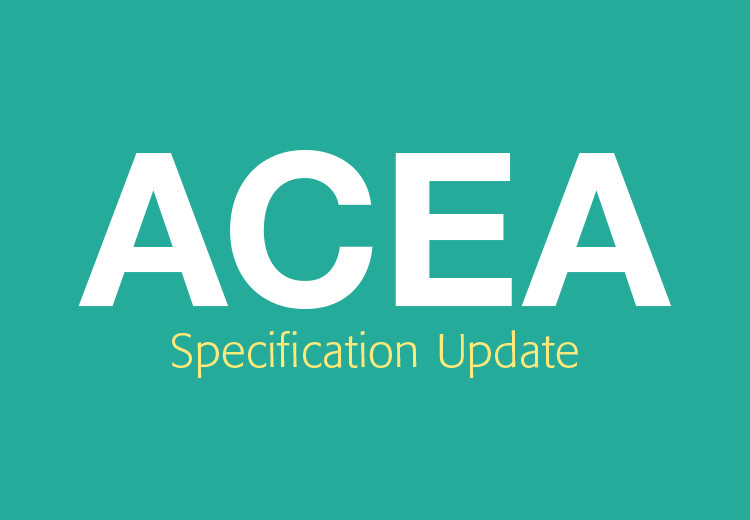Specification updates
ACEA HD Sequences released
22 January 2025
Please note this article was published in April 2018 and the facts and opinions expressed may no longer be valid.
11 April 2018

As ACEA works to update the European Oil Sequences, Insight reports on the progress and explores some of the challenges that remain.
 ACEA specifications provide baseline protection for the majority of the European vehicle fleet
ACEA specifications provide baseline protection for the majority of the European vehicle fleetThe ACEA specifications provide a set of performance requirements that define service-fill engine oils that offer baseline protection for the majority of the European vehicle fleet. These oils, when used as recommended, are expected to run in vehicles without causing any problems and deliver a level of performance on which marketers, OEMs and consumers can rely.
The last revisions to the ACEA Oil Sequences, published in December 2016, introduced measures to ensure lubricants continue to deliver sufficient protection to heavy and light-duty engines.
These Sequences became mandatory for new claims on 1 December 2017, and oils with ACEA 2012 claims may be marketed until 1 December 2018.
It is important for regular updates to be made so that the Sequences continue to reflect engine hardware needs and address specific issues.
In addition, as current test hardware becomes unavailable, it is essential to ensure appropriate replacement tests are developed. With these factors in mind, ACEA has started work on the next revisions, initially aiming for release in 2018. However, there is recognition that the timing is ambitious and it remains to be seen if this timing is feasible.
Improving the efficiency of internal combustion engines is high on the agenda of automotive manufacturers. The new turbocharger deposit test aims to improve turbocharger efficiency and ultimately engine efficiency. Toyota has kindly offered the hardware and the draft test procedure and Toyota’s commitment and effort here is very much appreciated by all of the stakeholders. Work is now underway at CEC so that the ‘Toyota test’ can become a CEC test, which will enable its introduction into the ACEA Sequences in compliance with EELQMS (European Engine Lubricant Quality Management System).
Low-speed pre-ignition (LSPI) is another item of interest that is related to engine efficiency and durability. Today’s turbocharged gasoline direct injection (GDI) engines are state of the art. When these engines are operated under low-speed and high-load driving conditions, pre-ignition events can occur, resulting in high pressure peaks, knocking and potentially engine damage. From an efficiency point of view, engine developers would like to take advantage of the low-speed / high-load operating regime, but LSPI prevents them from leveraging the full potential.
Lubricants have been found to have an impact on LSPI. This has led to the development of an ASTM LSPI test for the ILSAC GF-6 specification, and this test is now also being considered for introduction into the ACEA Sequences.
To address the unique wear requirements of GDI engines there is also talk about introducing a chain wear test to the ACEA Sequences. Again, there seems to be no need to design a new test since an ASTM chain wear test is being developed for ILSAC GF-6.
In addition, we expect the introduction of the M271EVO sludge test, currently under development by CEC, to replace the current non-CEC sludge test.
Replacement tests are being considered where hardware is reaching, or has already reached, the end of its life.
Here, the Sequence IVB is being discussed for valve train wear protection filling the gap the TU3 removal left behind. The Sequence VH will also succeed the Sequence VG.
It should be noted that ACEA 2016 already has a concession for the Sequence VH to be used as an alternative to the Sequence VG, and it is likely that Sequence VH limits will be defined for ACEA 2016 in the near future.
It is too early in the process to say what structural changes may be made in the light-duty Sequences. But, it is expected that the introduction of new performance requirements, like LSPI, chain wear and turbocharger deposits, will drive the introduction of new categories. Since they already contain three A/B-Categories and five C-Categories, some removal or harmonisation may be appropriate to reduce complexity. However, this is still under discussion within the industry.
Just as for the light-duty side, the ongoing efforts for efficiency improvement are driving some significant specification changes for heavy-duty. In addition, the specifications need modification to ensure they continue to reflect engine hardware needs.
In terms of structure, we can expect to see quite significant change. The current E6 and E9 categories are expected to be upgraded by the addition of the Volvo T13 test and potentially the Caterpillar C13 aeration test. Consequently, these upgraded categories will get new designations where E6 will become E8 and E9 will become E11. The full SAPS E4 and E7 categories may remain unchanged to serve legacy engines.
Fuel economy gains are the main driver for the introduction of the new low viscosity F categories, for lubricants with HTHS from 2.9 to 3.2 mPa.s.
While broadly speaking F8 and F11 are the low HTHS categories corresponding to E8 and E11 respectively, a closer look reveals additional requirements.
Along with the move to lower viscosities, a trend of modern engines is a reduced reliance on exhaust gas recirculation to meet emissions regulations and therefore they produce less and less soot.
Wear protection in low viscosity, low soot environments will be required for the new F categories.
A CEC Special Project Group (SPG) has helped to identify the critical wear areas and, in the absence of any suitable current test, has recommended the development of a low soot bearing wear test and a low soot ring on liner wear test. Both test developments, which are about to start, will be based on laboratory rig tests rather than fired engine tests.
Here again, there is a need to replace tests that are coming to the end of their life. The OM501 test hardware is projected to run out within the next 12-18 months, and the availability of OM646 hardware beyond 2018 is still questionable. ACEA is currently working to find replacement solutions.
In addition to these replacement tests, the limits for seals compatibility and OM646Bio are also under review and could be expected to tighten in the next release.
ACEA aims to keep the release timing of the light and heavy-duty Sequences in sync. With all the challenges associated with new test developments, hardware sourcing and control of current tests, the aim to issue the next Oil Sequences in 2018 appears to be very ambitious.
Sign up to receive monthly updates via email